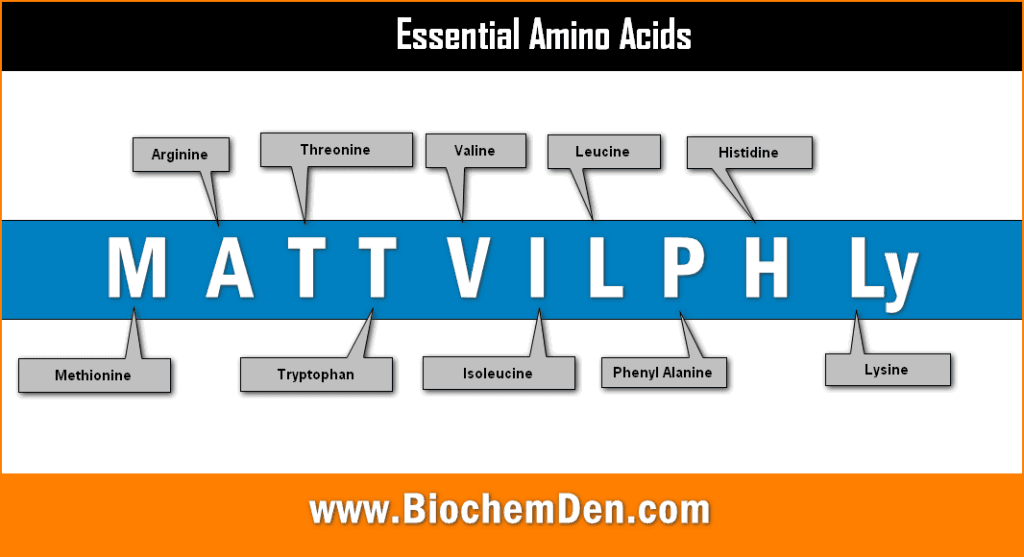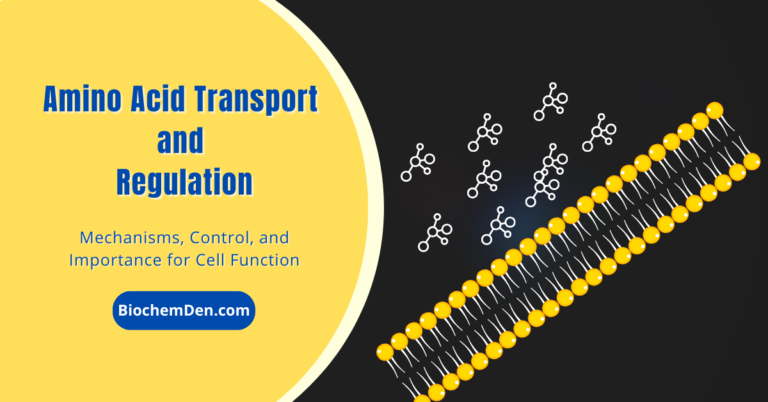In biochemistry, amino acids play a crucial role as the building blocks of proteins. These small organic compounds are essential for various biological processes, including protein synthesis, enzyme function, and cell signalling. Understanding the structural chemistry of amino acids is fundamental to comprehending their significance in biology and biochemistry.
Amino acids are monomeric units of proteins. Proteins are high molecular weight organic polymer. Although about 200 to 300 amino acids occur in nature, only 20 of them are seen in human body.

What is Amino Acid?
Amino acids are organic compounds containing an amino group (-NH2) and a carboxyl group (-COOH). They are the building blocks of proteins, essential macromolecules involved in numerous biological processes. Amino acids are characterized by their diverse side chains, giving each amino acid unique properties and chemical behaviour.
Before going to discuss what is amino acids, we want to discuss few points on the historical points. Amino acids are relatively simple molecules containing both an amine group and an acid group.
The biologically important amino acids are the alph-amino acids that have the amine and acid groups attached to the same carbon atom. There are more than 300 known natural amino acids; however, only 20 of them are used in protein synthesis.
Francis Crick (who with James Watson determined the structure of DNA) labeled this set of amino acids the magic 20.
Other amino acids are found in certain proteins, but in almost all cases these additional amino acids result from the modification of one of the magic 20 after the protein formed.
Definition of Amino acids
“A substance which has both carboxyl and amino group in the same molecule is called ‘amino acid’. The amino group is basic while the carboxyl group (-COOH) is acidic in nature”.
General Structural Chemistry of Amino acids

Amino acids are a group of organic compounds containing two functional groups – amino and carboxyl. The amino group (-NH2) is basic while the carboxyl group (-COOH) is acidic in nature.
All proteins are polymers of amino acids and all these acids except two have an amino group attached to the carbon atom next to the carboxyl group.
Amino Acid Structure
The General Structure of Amino Acids
Amino acids consist of a central carbon atom, often called the alpha carbon (α-carbon), bonded to four different chemical groups: an amino group (-NH2), a carboxyl group (-COOH), a hydrogen atom (-H), and an R-group or side chain. The R-group varies among different amino acids, contributing to their distinct characteristics.
Key Functional Groups in Amino Acids
The functional groups present in amino acids are vital for their chemical properties. The amino group, consisting of a nitrogen atom bonded to two hydrogen atoms, acts as a weak base. On the other hand, the carboxyl group, composed of a carbon atom double-bonded to an oxygen atom and single-bonded to an oxygen atom and a hydroxyl group, acts as a weak acid.
The Importance of Chirality
Amino acids exhibit chirality, which means they exist in two mirror-image forms called enantiomers: L-amino acids and D-amino acids. In living organisms, proteins are exclusively made up of L-amino acids. The presence of chirality in amino acids influences their biological activity and how they interact with other molecules in the body.
Rules to write the Amino acids

We should write the general formula by using the given points:
- We should write the Carboxyl group on Top side of the centre carbon (asymmetric carbon)
- We should write the Amino group on Left side of the centre carbon (asymmetric carbon).
- We should write the hydrogen atom on Right side of the centre carbon (asymmetric carbon).
- We should write the ‘R’ side chain at the Bottom of the centre carbon (asymmetric carbon).
The amino acids are termed as α-amino acids, if both the carboxyl and amino groups are attached to the same carbon atom. The amino acids mostly exist in the ionized form in the biological system.
Stereochemistry
Carbon atom is attached to four different groups, which is simply called “asymmetric” and therefore exhibits optical isomerism. All amino acids contain asymmetric carbon, except Glycine. (Glycine is Optically inactive compound).
D & L Forms

Amino acids can be shown in two different forms depends on the position of amino group on the asymmetric carbon atom.
When the amino group situated on the left side, which is L-form. When the amino group situated on the sight side, which is D-form.
All naturally occurring amino acids are in L-configuration.
Classification of Amino Acids
Amino acids can be classified based on various criteria. One common classification is based on the polarity of the R-group, dividing them into three categories: nonpolar, polar, and electrically charged (acidic or basic) amino acids. This classification helps determine their solubility, interactions, and protein structure and function roles.
Peptide Bonds: Linking Amino Acids Together
Amino acids are joined together through a specific type of covalent bond called a peptide bond. This bond forms between the carboxyl group of one amino acid and the amino group of another amino acid, releasing a water molecule. The resulting chain of amino acids is called a polypeptide.
Primary Structure: The Sequence of Amino Acids
The primary structure of a protein refers to the specific sequence of amino acids in the polypeptide chain. This sequence is determined by the genetic code encoded in DNA. The unique arrangement of amino acids in a protein chain is crucial for its overall structure and function.
Secondary Structure: Folding Patterns of Proteins
Secondary structure refers to the local folding patterns within a protein chain. The two most common secondary structures are alpha helices and beta sheets. These structures are stabilized by hydrogen bonds between the amino acid residues, contributing to the overall stability and shape of the protein.
Tertiary Structure: Three-Dimensional Arrangement
Tertiary structure describes the overall three-dimensional arrangement of a protein. Various interactions determine it, including hydrogen bonding, hydrophobic interactions, disulphide bridges, and electrostatic interactions. The unique tertiary structure of a protein is crucial for its biological activity and specific functions.
Quaternary Structure: Interactions between Multiple Protein Subunits
Quaternary structure refers to the arrangement and interactions between multiple protein subunits.
Some proteins consist of a single polypeptide chain (monomers), while others involve assembling multiple polypeptide chains (oligomers). The quaternary structure influences the protein’s stability, activity, and overall function.
Amino Acid Side Chains and their Properties
The side chains of amino acids significantly contribute to their unique properties and chemical behaviour. Each amino acid has a distinct side chain, which can be hydrophobic, hydrophilic, acidic, basic, or other specific functional groups.
These side chains determine the amino acid’s role in protein folding, interaction with other molecules, and enzymatic activity.
Non-Standard and Modified Amino Acids
Apart from the 20 standard amino acids, non-standard and modified amino acids exist in nature. These amino acids may arise from post-translational modifications or be incorporated into proteins through specific biosynthetic pathways.
Non-standard and modified amino acids can expand the functional diversity of proteins and contribute to their unique properties.
Amino Acid Analysis Techniques
Various analytical techniques identify and quantify amino acids in biological samples. Techniques such as high-performance liquid chromatography (HPLC), mass spectrometry (MS), and amino acid sequencing determine the composition and concentration of amino acids in proteins and other biological molecules.
The Role of Amino Acids in Protein Function
Amino acids are integral to protein function and play diverse roles in the human body. They are involved in enzymatic catalysis, cell signalling, transport of molecules, immune response, and many other physiological processes.
The unique combination and arrangement of amino acids in proteins determine their specific functions.
Essential and Non-Essential Amino Acids

The human body requires essential amino acids, which cannot be synthesized internally and must be obtained through the diet.
There are nine essential amino acids: histidine, isoleucine, leucine, lysine, methionine, phenylalanine, threonine, tryptophan, and valine.
Non-essential amino acids can be synthesized by the body, reducing the dietary requirements for their intake.
Amino Acids in Human Nutrition
A balanced diet that includes a variety of protein sources is essential for obtaining an adequate supply of amino acids.
Consuming protein-rich foods gives the body the necessary amino acids for protein synthesis, tissue repair, and overall health.
Different dietary sources contain varying profiles of amino acids, highlighting the importance of a diverse and balanced diet.
Amino Acids and Health Benefits
Amino acids have been associated with various health benefits. For example, branched-chain amino acids (BCAAs) are known for their role in muscle protein synthesis and recovery.
Other amino acids, such as tryptophan and tyrosine, are precursors for neurotransmitters involved in mood regulation and cognitive function.
Understanding the specific benefits of amino acids can aid in optimizing health and well-being.
Frequently Asked Questions (FAQs)
Are all amino acids used for protein synthesis?
Yes, all amino acids are involved in the synthesis of proteins. However, some amino acids may also serve other purposes in the body.
Can amino acid deficiencies lead to health problems?
Yes, deficiencies in specific amino acids can lead to various health issues. Maintaining a balanced diet is important to ensure an adequate supply of all essential amino acids.
Are amino acids only found in proteins?
While amino acids are primarily associated with proteins, they are also involved in other biological processes and can be found in various molecules and metabolic pathways.
Can amino acid supplements improve athletic performance?
Amino acid supplements, particularly BCAAs, have been studied for their potential benefits in muscle recovery and performance. However, individual results may vary, and it’s important to consult a healthcare professional before starting any supplementation regimen.
Are there any risks associated with amino acid supplementation?
Like any dietary supplement, there can be potential risks associated with amino acid supplementation. It’s crucial to follow recommended dosages and consult a healthcare professional to ensure safety and efficacy.
Conclusion
Amino acids serve as the fundamental building blocks of proteins, and their structural chemistry underlies their significance in biology and biochemistry.
The various properties of amino acids and their unique sequence and arrangement in proteins determine these essential macromolecules’ structure, function, and overall biological activity.





